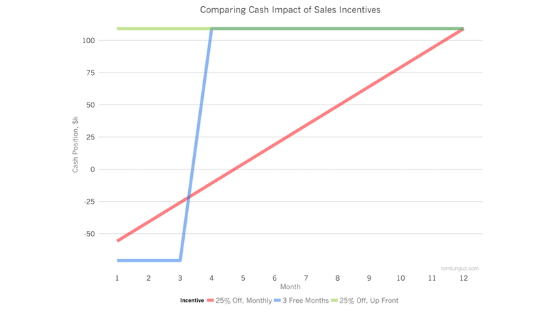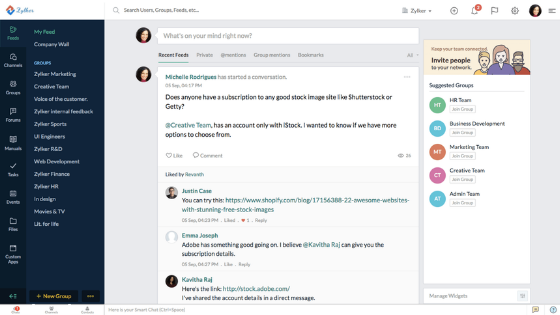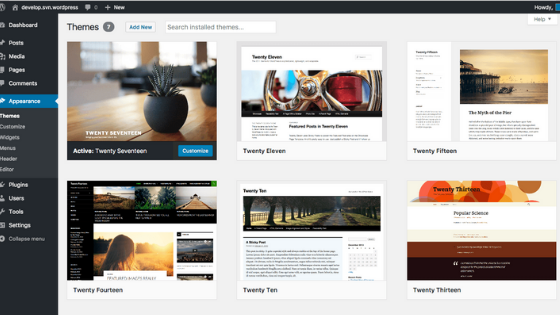Software as a Service (SaaS) is the present and the future of the tech industry. According to Transparency Market Research (TMP), the SaaS market will reach $164.29 billion by 2022. The IDC says that SaaS delivery is growing five times faster than the traditional software market, with cloud software accounting for $1 of every $4.59 spent on software.
Discounting SaaS products can greatly impact your revenue and consumer perception. Survey reveals that discounts have a substantial influence on customer acquisition, brand loyalty and brand perception among consumers. But here’s the thing: Discounts work differently from the seller’s perspective. And if businesses aren’t careful with discounts—if they don’t strategize correctly—the whole thing can backfire in a big way.
Long-Term Effects of Discounting
Quality and price coexist. In the consumer’s mind, the higher the quality, the more the product costs. So, when buyers notice your discounted product, they are confused. And their first rational is: something is wrong. Frequent discounting serves to lower the value of the brand because of an almost subconscious reaction by the consumer who believes that quality also has been lowered.
Consequently, your pricing strategy will train customers to buy only when you offer discounts. That’s not helpful for your bottom line. Your team won’t be attracting ideal customers who want your products. Instead, price-sensitive buyers who don’t appreciate your product’s value could become the norm. Data also revealed that SaaS discounting lowers LTV by over 30%.
Also read:
- Best SaaS Affiliate Marketing Software
- Best Practices for Hiring Freelancers
- How to Convert Blog Traffic to Leads?
Here are 7 key lessons that companies can use to implement pricing and discount strategies that work. So, without further ado, let’s get started.
Tips to Implement Correct Discount Strategies
Package Level Discounting
Package level discounting is discounting without actually discounting. In fact, this method encourages customers to pay more than they intended to in the first place.
For example, a customer signing up has the option of taking the $10 per month standard package plan, which will fulfill their needs. However, by signing up today, they can get the premium package with all of its extra features for $20 per month instead of the regular price of $30 per month. And they can have it at this price until they cancel or downgrade, after which they’d have to pay full price.
Or maybe they could enjoy the reduced price for the premium plan for the first 12 months — giving them a lengthy period to reap (and hopefully become attached to) the benefits and extra features. It’s a clever way to use discounts and a great method for sales reps to deploy with new customers.
Understand the Timing of Cash flows
Companies at any stage should consider offering discounts to their customers—but not without knowing their own profit margins. Discounts can kill a company’s cash flow if they are offered in silos, without taking into account sales commissions and data from the finance team. But how do you determine the ideal discount percentage? It’s a tricky question but thankfully one you can do a little math to answer.
In the graph below, there are three discount models:
- 25% off monthly payments
- 25% off upfront annual payment
- First three months free

Both the 25% off monthly and three months free options result in the company facing a cash challenge if the commission is paid within the first 3–6 months, with the 25% off monthly option putting the company at greatest risk. As you can see, the best approach for the business is to offer 25% off up front.
Principle of Reciprocity
If you give the customer a discount, the customer should you give you some other commitment in return. That commitment should be something other than closing the deal. One commitment to consider is increasing the length of the contract. This is a win for both parties. The customer gets an attractive price on your offering. Your company locks in a few years of revenue, eliminating any chance for near-term churn.
Another commitment to consider is changing the payment terms. Pair a discount with paying the entire annual contract right now. Or tie discounts to quarterly payments. Once again, this enables you to lock in more revenue early. Even better, you get money in hand right away.
Relevant read:
- Why Outsource Software Development?
- How to Remotely Manage your Workforce?
- Ideas to Boost Customer Retention
To be really effective, discounts require scarcity
Whether that scarcity is the amount of time the discount is available, the number of discount subscriptions available, etc. it needs to be there. If you don’t put some bookends on the offer, it looks like you’re just discounting your product for no reason (or, several reasons like your product sucks, you don’t value it, you’re desperate, you don’t know how to market your product, etc.).
Scarcity also gets people to take action; no scarcity, no sense of urgency to take the offer. It means you’ll have to actually figure out how to attract better customers, raise the value perception of your offering or, ideally both. If you really do have cash flow issues, then figure out how much you need and offer only that many annual subscriptions, then stop offering them.
Don’t broadcast discounts to the world
A lot of people are willing, and happy, to pay full price. A large banner across a website advertising discounts risks lost income from those people. The idea of a discount should be to make it easier to close a sale, but only as a last resort. Sales reps need to identify customers that require a discount to sign-up and offer them sparingly. Instant demos and online sales meetings are a great way to get to know prospects and understand their pain points and motivations in order to know when (and when not) to offer a discounted rate.
Ultimately, products should be priced to reflect true value and command sales without any deviation in price. However, when the moment is right and when prospects need a little nudge in the right direction, discounts used at the right time can be used effectively.
Percentages Are Hard for People to Understand
Let’s say you’re out getting your favorite coffee. There’s a special promotion, and you have a choice: You can either get 33% more coffee for the same price, or take 33% off the price. What would you do? A team of researchers at the University of Minnesota’s Carlson School of Management asked the same question to their students. The vast majority of them viewed both options as equal, even though the discount by far is the better proposition.
In other words, customers prefer getting something extra to getting something cheap. Retail businesses often see bonus deals valued more than discounts of the same value. For SaaS businesses, this is a great tactic to incorporate in sales proposals—offer the first or second month free instead of using percentages.
Also read:
Demographic-specific discounting
Enterprise and student discounting are the most commonly used demographic-specific discounting methods in SaaS and can be used without damaging the perceived value of a product.
Given the factors involved, such as volume and package requirements, enterprise discounts should be issued on a case-by-case basis without prices being plastered across a website. Non-disclosure agreements (NDAs) can also be put in place to ensure deals remain confidential.
Conclusion
Discounting your products is a major business decision. It can attract the wrong customer and even cheapen the perception of your brand. However, in certain circumstances, offering discounts to enterprise customers can produce greater long-term benefits. So, be strategic with your SaaS pricing and discounting strategy and let us know your views in the comment section below.




























